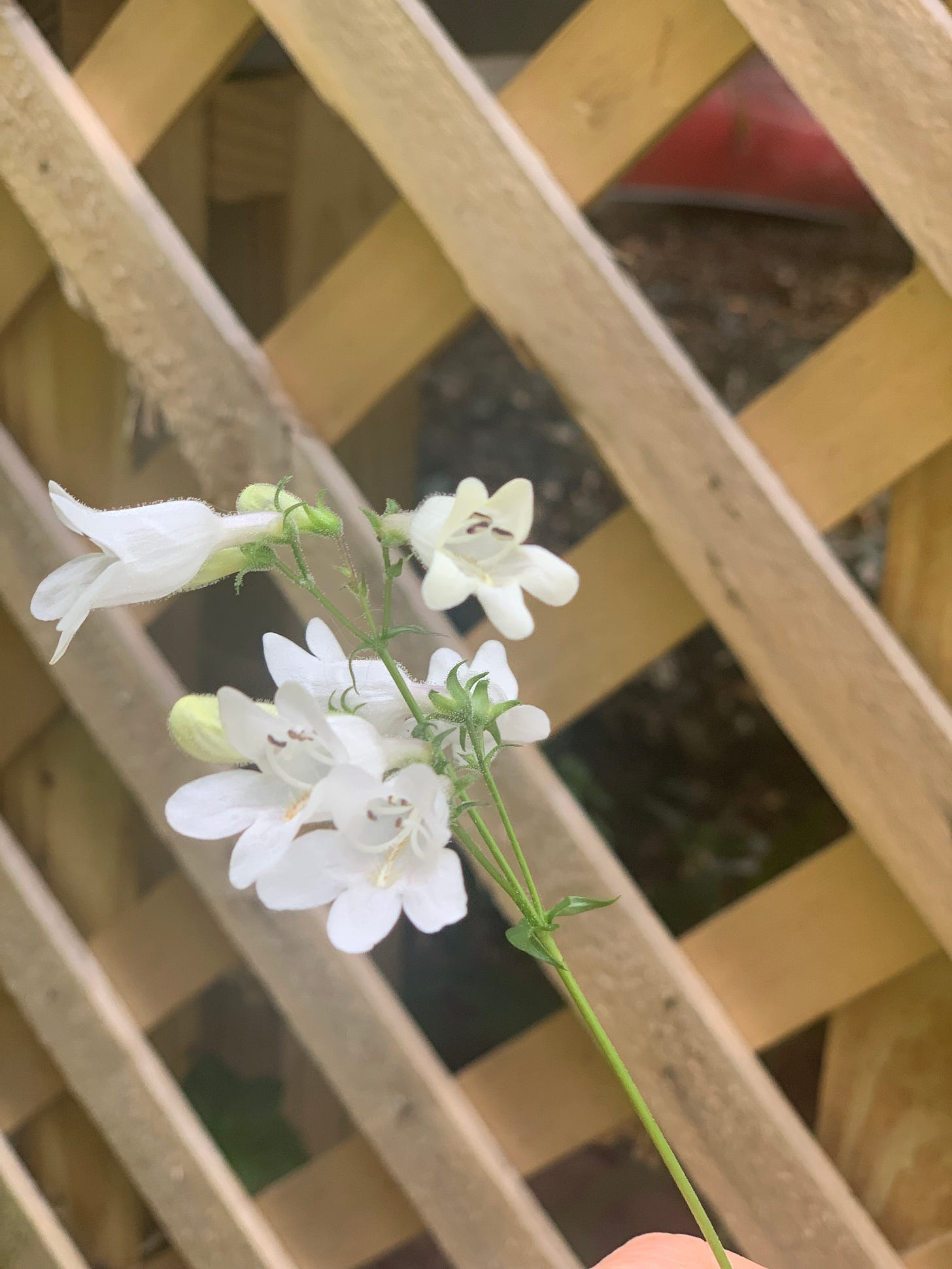The garden looks so different this year. Last year, I celebrated when a plant reached six inches tall. This year, everything’s shooting up tall and slender like Olive Oyl, and leaning in all different directions. This leads me to the dreaded question: do I need to start staking?
As a teenager, my summer job was working with a gardener. I spent weeks in June and July staking plants. First, jam the stake in the ground with gloves on. Then, attach the string by tying delicate knots with gloves off. Next, wrap the string around the plant just enough to support it but not enough to give it a waistband. And finally, stand back and hope it all looks natural. (Put gloves back on - it’s time to start the process again!)
It was a chore. When I created my native plant garden, staking was not on my agenda. I didn’t plant the garden to have extra work. Staking, pruning, edging, weeding, mulching are all tasks I’m trying to avoid. Weeding I get since it’s a necessity. Mulching I can handle because I’m keeping the size of the garden manageable. But staking feels like one of those garden maintenance things I was hoping to avoid.
Yet here I am: to stake or not to stake.
The Penstemon (Beardtongue) plants I ordered this year are blooming which is exciting, since last year, most things I planted didn’t flower.
But these flowers are growing tall and spindly, and then falling right over the new fence.
Some blossoms have already snapped off or gotten crushed. So I’m left wondering, should I plant them closer together next time? Or plant them near sturdier plants for support? Or, will I always have a relationship with staking and gardening?
So, today, I’m driving to the general store to pick up stakes and string. That way I’ll be prepared. If I do end up staking, I’ll also keep an eye out for visiting Penstemon pollinators. Syrphid flies? Bumblebees? Butterflies? Hummingbirds? A hawk moth? Hopefully I’ll be enjoying the flowers at the right time to observe a native pollinator.
Here’s to creating a pollinator’s paradise!






There are lots of different kinds of stakes that don't require string. Different types for different support needs. I have 5 different types. Have fun with your garden!